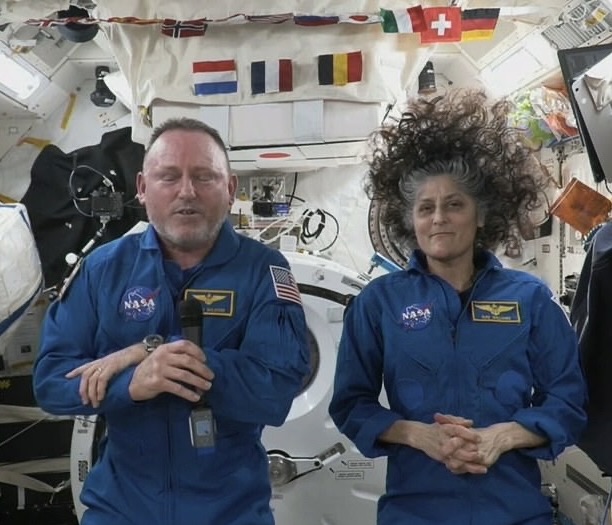NASA is under fire after two astronauts, Barry “Butch” Wilmore and Sunita “Suni” Williams, were left stranded on the International Space Station (ISS) for over nine months due to technical failures in Boeing’s Starliner spacecraft. Originally planned as a short-term mission, their stay was significantly extended due to malfunctions that made their return unsafe. Critics argue that NASA’s handling of the situation has been inadequate, while the space agency insists it acted in the best interest of astronaut safety.
Why Were NASA Astronauts Stranded in Space?
The mission began with high hopes as part of Boeing’s Starliner program, but technical failures soon turned it into an unintended long-duration mission. The major issues that led to the astronauts being stranded included:
- Thruster Malfunctions – Starliner’s propulsion system showed inconsistencies, raising safety concerns for reentry.
- Helium Leaks – Leaks in the spacecraft’s helium system compromised its ability to control thrusters effectively.
- Software Glitches – Previous Starliner missions have faced software issues, raising doubts about Boeing’s ability to execute a safe return.
NASA engineers, after extensive testing, deemed it too risky to bring the astronauts back in the faulty Starliner, forcing an indefinite delay in their return.
NASA’s Response: A ‘Pitiful Excuse’?
NASA defended its decision, stating that astronaut safety was the priority and that it had been working closely with Boeing to resolve the issues. However, critics and space industry experts have called out the agency for its reliance on Boeing, particularly after multiple technical failures in past Starliner tests.
Public frustration has mounted over what some are calling a “pitiful excuse,” questioning why a backup plan wasn’t in place to ensure a timely return. Many are now comparing Boeing’s struggles with the reliability of SpaceX’s Crew Dragon, which has successfully completed multiple missions without similar complications.
How Are the Astronauts Coping?
Despite the unexpected delay, Wilmore and Williams have continued their mission by:
- Conducting routine ISS maintenance and experiments.
- Assisting in ongoing scientific research aboard the station.
- Preparing for their eventual return, expected around March 16.
NASA has ensured that the astronauts remain in good health, with sufficient supplies on the ISS. However, prolonged exposure to microgravity poses potential health risks, including muscle atrophy and bone density loss.
What Happens Next?
NASA has now decided to bring the stranded astronauts home using SpaceX’s Crew Dragon instead of Boeing’s Starliner. This move underscores the increasing reliability gap between Boeing and SpaceX in human spaceflight.
Key developments to watch for:
- NASA’s Future Partnership with Boeing – Given Starliner’s repeated failures, will NASA continue investing in Boeing’s space program?
- Potential Lawsuits or Investigations – Could Boeing face legal consequences or further scrutiny over its handling of the Starliner mission?
- SpaceX’s Growing Role – With SpaceX stepping in to rescue the mission, will NASA rely more heavily on Elon Musk’s company for future crewed missions?
Conclusion
NASA’s prolonged delay in bringing back astronauts from the ISS has sparked major concerns over mission planning, spacecraft reliability, and the agency’s dependency on Boeing. With spaceX now stepping in to provide a solution, the incident may mark a turning point in future U.S. space exploration partnerships. As public trust wavers, NASA and Boeing must address critical failures to prevent a similar crisis in the future.
SEO Optimization & Keywords for Maximum Visibility
To maximize search engine ranking, this article strategically includes high-impact keywords such as:
- NASA astronauts stranded
- Boeing Starliner failure
- NASA Boeing controversy
- SpaceX Crew Dragon rescue
- ISS astronaut delay
- NASA mission failure
- NASA Boeing partnership issues
- Why NASA left astronauts stranded



